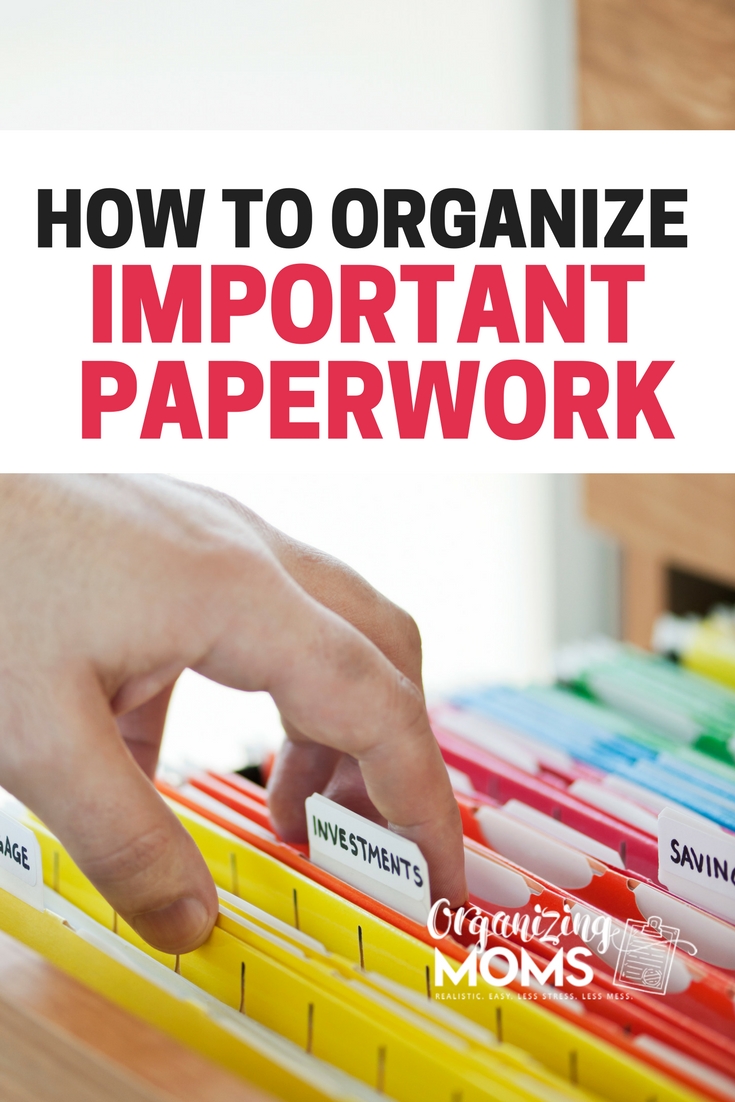Mastering Paperwork: How to Organize Your Documents Efficiently

In today's fast-paced world, managing a multitude of documents efficiently is a skill that can significantly alleviate stress and enhance productivity. Whether you're a student, a professional, or managing a household, organizing your paperwork is crucial. This blog post will guide you through a step-by-step approach to mastering the art of document organization, ensuring your important papers are always within reach, neatly categorized, and easily accessible.
Understanding the Importance of Document Organization

Before diving into the practical steps, it’s essential to understand why document organization matters:
- Time-saving: Knowing exactly where to find a document saves time, reducing the frantic search for misplaced files.
- Stress Reduction: A clutter-free environment leads to a clutter-free mind, promoting peace and efficiency.
- Professionalism: Organized documents demonstrate a professional approach to your work or studies.
- Compliance and Legality: Keeping documents organized ensures you can comply with legal or regulatory requirements when needed.
Step-by-Step Guide to Organize Your Documents

1. Categorization

The first step in organizing documents is to categorize them. Here’s how you can do it:
- Financial Documents: Bank statements, tax forms, bills, receipts.
- Work or School Related: Reports, assignments, certification, employment records.
- Legal Documents: Contracts, leases, wills, marriage certificates.
- Health Records: Medical reports, insurance documents, prescriptions.
- Personal: Warranties, manuals, personal letters, cards, photos.
🎯 Note: Make sure to keep sensitive documents like passports and birth certificates in a secure location, such as a safe or a locked drawer.
2. Declutter and Sort

Once you’ve categorized your documents, the next step is to:
- Remove duplicates or unnecessary papers.
- Shred or securely dispose of documents you no longer need but contain sensitive information.
- Keep only what is relevant and up-to-date.
Consider using this table to help decide what to keep:
| Document Type | Retention Period |
|---|---|
| Bank Statements | 1-3 years |
| Tax Returns | 6-7 years |
| Receipts for Large Purchases | Indefinite |
| Health Records | Indefinite |

3. Choose the Right Storage

After sorting, you need to decide on storage solutions:
- Folders: Use color-coded or labeled folders for different categories.
- Binders: Ideal for documents that need to be accessed frequently; include section dividers.
- File Cabinet: A physical space to store files securely.
- Digital Storage: Use cloud services or external hard drives for digital document backup.
4. Labeling and Indexing

Labeling is key to finding documents quickly:
- Ensure labels are clear and visible.
- Use an indexing system either digitally or physically to map your storage location for each category of documents.
5. Digitize and Back Up

To protect against loss or damage:
- Scan important documents and store them digitally.
- Regularly back up digital files to external drives or cloud services.
🔐 Note: Digital backups ensure that you can access critical documents from anywhere, but make sure to secure them with strong passwords.
6. Maintenance and Upkeep

Regular upkeep is crucial:
- Set aside time monthly to review, update, or purge your documents.
- Create a system for incoming documents, sorting them immediately upon receipt.
7. Emergency Planning

In case of emergencies:
- Keep a set of essential documents in an easily accessible, waterproof, and fire-resistant location.
To sum up, effective document organization not only brings order to your life but also enables you to react swiftly to various situations, be it tax season, a work audit, or just the daily routine of managing papers. By following these steps, you’re setting up a system that not only saves time and reduces stress but also keeps you in compliance with legal requirements. Remember, organization is an ongoing process that requires periodic attention to maintain its effectiveness. With the right approach, your documents will always be where you need them, when you need them, fostering an environment where productivity can thrive.
What is the best way to start organizing documents?

+
Begin by gathering all your documents in one place. Sort them into broad categories like finance, work, legal, and personal. From there, further subdivide each category into specific types of documents.
How long should I keep bank statements?

+
Generally, you should keep bank statements for at least 1 to 3 years. However, if they’re related to tax or insurance claims, keep them for 6-7 years or indefinitely.
What should I do with sensitive documents before disposing?

+
Always shred or securely dispose of sensitive documents to prevent identity theft. Avoid throwing them away in the trash.
Is digital document storage secure?
+Yes, when done correctly. Use reputable cloud storage services with encryption and strong password protection. Also, regularly backup your digital files.